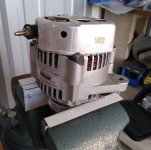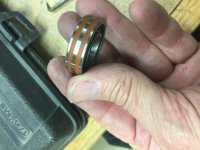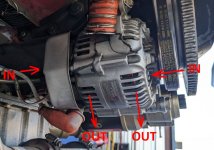Manchu16
Well Known Member
After a bit of troubleshooting, I figured it out, but I thought I should post it here in case others ever experienced this.
Symptom: when rotating the prop by hand, I would feel a distinct grinding feeling. This would only happen immediately after shutdown when rotating the prop to put the towbar on and after a day or two when it was time to preflight. It would only happen at these two times, and only for the first 90°. Think sharpening a pencil type grinding.
My first thought is, I cracked a ring or there was some debris stuck in a cylinder. scoping ruled that out.
In order to remove the cowl, I would have to move the prop and by the time everything was off, there was no more grinding. Running the engine on the ground did not generate enough heat without the cowl to create the symptom.
I drained the oil expecting to see metal. Everything was normal.
There was no leaking around the prop seal nor anywhere else that would indicate some kind of issue.
Solve: I just happened to run across a few posts about alternators and bearings failing. I pulled my alternator and lo and behold there was about 1/16 of an inch of play in the pulley. The rear bearing had spun in the housing. Just shy of 300 hours on the alternator. Still putting out solid power when pulled. Internals looked like new.
Symptom: when rotating the prop by hand, I would feel a distinct grinding feeling. This would only happen immediately after shutdown when rotating the prop to put the towbar on and after a day or two when it was time to preflight. It would only happen at these two times, and only for the first 90°. Think sharpening a pencil type grinding.
My first thought is, I cracked a ring or there was some debris stuck in a cylinder. scoping ruled that out.
In order to remove the cowl, I would have to move the prop and by the time everything was off, there was no more grinding. Running the engine on the ground did not generate enough heat without the cowl to create the symptom.
I drained the oil expecting to see metal. Everything was normal.
There was no leaking around the prop seal nor anywhere else that would indicate some kind of issue.
Solve: I just happened to run across a few posts about alternators and bearings failing. I pulled my alternator and lo and behold there was about 1/16 of an inch of play in the pulley. The rear bearing had spun in the housing. Just shy of 300 hours on the alternator. Still putting out solid power when pulled. Internals looked like new.







